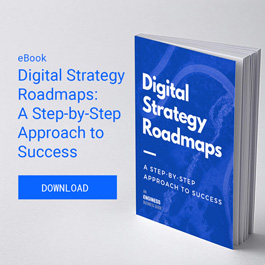 The most important part of any new website or digital work is to build a shared understanding and definition of the project with the key players. By creating the website together you build in ownership and commitment. This initial collaborative phase of the process is nuanced. It builds the foundation for project success and requires:
The most important part of any new website or digital work is to build a shared understanding and definition of the project with the key players. By creating the website together you build in ownership and commitment. This initial collaborative phase of the process is nuanced. It builds the foundation for project success and requires:
- Engaging stakeholders to create a shared understanding
- Proper preparation
- Suspending bias – participants must remain open-minded
- Patience. Don’t rush to solutions without insight as to the real issue to solve.
- Thinking of larger implications and the impact of decisions and designs on your entire system of business activities and partners.
 Proper engagement is not a “feel good” brainstorm session, where ideas are encouraged spontaneously, solicited randomly, and buzzwords scrawled enthusiastically on Post-it notes, without real purpose, structure or follow up. Too often, somebody suggests a fast, easy, and “obvious“ solution without real consideration of larger implications. The person suggesting that solution, either through personality or hierarchy, can stifle discussion, analysis or open-minded critique. We suggest secret ballots or anonymous feedback tools where your team of good critical thinkers can give input on ideas without fear of reprisals or offending their boss.
Proper engagement is not a “feel good” brainstorm session, where ideas are encouraged spontaneously, solicited randomly, and buzzwords scrawled enthusiastically on Post-it notes, without real purpose, structure or follow up. Too often, somebody suggests a fast, easy, and “obvious“ solution without real consideration of larger implications. The person suggesting that solution, either through personality or hierarchy, can stifle discussion, analysis or open-minded critique. We suggest secret ballots or anonymous feedback tools where your team of good critical thinkers can give input on ideas without fear of reprisals or offending their boss.
Use a disciplined facilitator to keep the session on-track, diplomatically “park” premature solutions to the side, and keep the focus on an investigation of the real issues and challenges.
 Proper engagement preparation requires a literature review, competitive audit and market analysis. Participants must have done their homework (preferably a formally prepared exercise), and come to work with open minds. Be clear to all, that the first step is to frame the problem – not solve it. This is the open-ended and sometimes uncomfortably ambiguous first stage in the process that ensures the rest of the work being done will be appropriate and directed. It is a critical step to engage in prior to launching into creative or implementation work.
Proper engagement preparation requires a literature review, competitive audit and market analysis. Participants must have done their homework (preferably a formally prepared exercise), and come to work with open minds. Be clear to all, that the first step is to frame the problem – not solve it. This is the open-ended and sometimes uncomfortably ambiguous first stage in the process that ensures the rest of the work being done will be appropriate and directed. It is a critical step to engage in prior to launching into creative or implementation work.
Use various techniques to bring fresh and appropriate insight to the challenge at hand. Question assumptions. Measure, observe, count, participate, read, listen, ask and compare. Don’t take things for granted. Identify end-users and profile them in detail. Do a competitive analysis of the sector or marketplace in question from the point of view of the consumer, not your own vantage point.  Map all those involved and affected by a new design. Identify what things have changed and will continue to change since you last implemented any digital strategies. Look at sustainability issues. Always search for evidence that you can use to root your eventual solutions in. This is where a consultant is most useful. An outsiders’ apolitical, unbiased and wider perspective can objectively pinpoint issues and priorities that might not be so easy for insiders to identify or agree on.
Map all those involved and affected by a new design. Identify what things have changed and will continue to change since you last implemented any digital strategies. Look at sustainability issues. Always search for evidence that you can use to root your eventual solutions in. This is where a consultant is most useful. An outsiders’ apolitical, unbiased and wider perspective can objectively pinpoint issues and priorities that might not be so easy for insiders to identify or agree on.
Build the principles of the project based on system thinking. Once consensus around the frame of the project is complete, the design can begin. Then, in the next problem-solving or design phase, the team should refer back to these principles for continuity.


